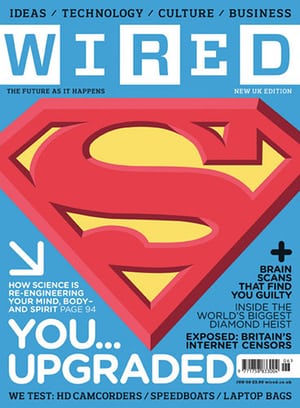 It’s fairly easy to understand why a print publisher like Hoffman Media is still incredibly bullish on print. The publisher knows its audience and their demand for quality publications. And for the Alabama-based publisher of several Southern-themed magazines, that means their audience wants print.
It’s fairly easy to understand why a print publisher like Hoffman Media is still incredibly bullish on print. The publisher knows its audience and their demand for quality publications. And for the Alabama-based publisher of several Southern-themed magazines, that means their audience wants print.
“We’re seeing readers really demand the quality and that’s something that Hoffman Media has always taken pride in, publishing top quality magazines,” Brian Hart Hoffman, president and chief creative officer of Hoffman Media, told Samir Husni earlier this month.
As Hoffman explained, that demand translates into investing in photography, upgraded paper, larger trim sizes, a tightly controlled edit-to-ad ratio, and excellent writing. This commitment to quality is working for them; 2017 was a record year for them in newsstand sales.
“The company says it hit a record high in newsstand sales last year (as of the most recent MagNet report, from Q1 of 2017, Hoffman was the only top-15 publisher to see a year-over-year increase in either retail units sold or newsstand revenue),” notes Greg Dool in Folio.
“It says its magazine business grown steadily since its founding in 1983, and it’s difficult to argue the point; in the last three years alone, Hoffman has bolstered its portfolio by launching four additional regular frequency titles, with a fifth planned for 2018.”
But what about brands that aren’t based in print, whose audience doesn’t necessarily have the same affinity for a high-quality print product? A brand like Wired, for instance, targeted at a decidedly digital audience?
“Will Wired still be putting out a magazine in 10 years? I don’t know,” said Wired’s new editor-in-chief Nick Thompson on Recode Media. “Will Wired still be putting out a magazine in a year? Yeah, absolutely!”
According to Recode’s Eric Johnson, Wired remains committed to print for some specific reasons, “including the guaranteed delivery mechanism of the U.S. Postal Service, which brings Wired to 800,000 readers monthly.”
“On the internet, if you get lucky, you can reach more than 800,000 people,” Thompson said. “But you can also put out really good stuff that’s seen by nobody because it doesn’t actually work in the algorithms.”
As we know, those algorithms are getting even tougher, with the new Facebook newsfeed rules thrashing engagement for publishers. So engaging in print with tangible subscribers is more valuable than ever. But it’s not the only upside for Wired.
“There is something about the process of creating the magazine version of a story — being limited in time, because there’s a real deadline, being limited in space because you have a certain number of pages, being limited in all the ways you’re limited — that makes the stuff better, usually,” Thompson said to Johnson.
Making stuff better – I love it. That could be the new tagline for print magazines in 2018. In the unrelenting stream of digital content, print is more compelling now than ever.
No matter your audience – whether they are cutting out recipes and tacking them to their fridge or tweeting the latest development news – print offers a way to engage with their human side.
Make stuff better; put it in print.
